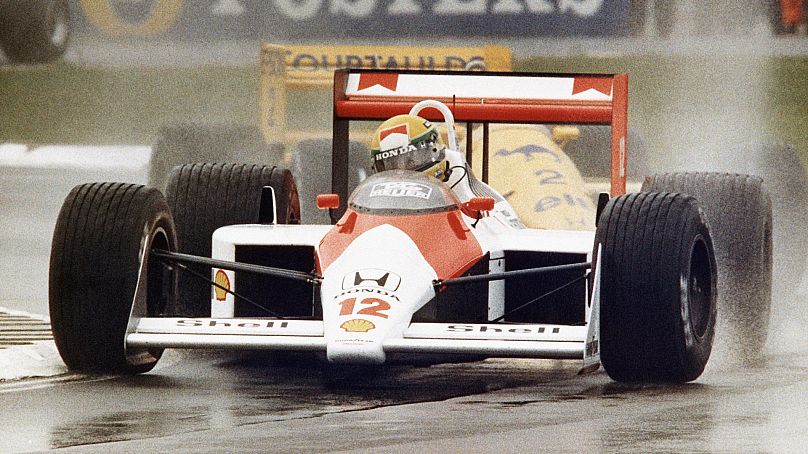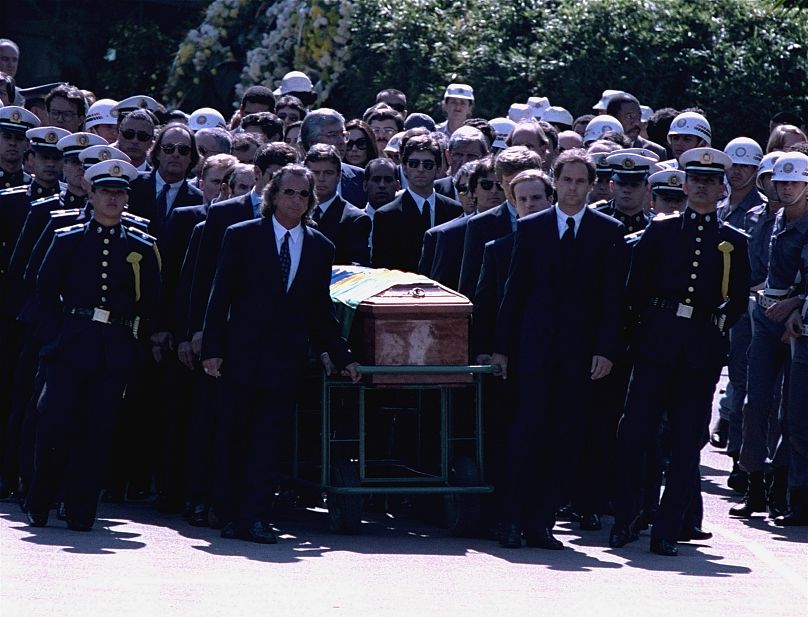1 May 1994: The death that changed Formula 1
For the most part, sportspeople aren’t the focus of culture writers. The plain objectivity of points scoring undercuts the depths of subjective joy we typically focus on, often to our detriment. In truth, the reason so many people adore sport is very similar to why we culture writers might adore a live performance of a play.
The best moments in sport transcend the mundanity of points tallying and bring thousands of people to the edge of their seats as they watch the drama of a competitor’s life’s goal either be fulfilled or come undone in front of them. In these moments, those rare charismatic athletes bring audiences along for a ride with the kind of fizzing anticipation actors like Marlon Brando could only dream of.
Brazilian Formula 1 driver Ayrton Senna was exactly that sort of athlete.
When you imagine a racing driver, Senna was the platonic ideal of one. Young, brash, handsome and devastatingly quick. On the track, few could match him for his scintillating pace and his refusal to accept anything but the fastest. If he couldn’t finish first, he’d rather crash fighting for the top of the podium than accept second place.
Off the track, he was similarly uncompromising. A devout Catholic, he’d talk about his faith and it’s influence on his driving without shame. “Just because I believe in God, just because I have faith in God, it doesn't mean that I'm immune. It doesn't mean that I'm immortal,” he fatefully portended in 1989.
Then there is the quote that has defined his time in motorsport as a man devout to speed and unwilling to yield. “If you no longer go for a gap that exists, you are no longer a racing driver.”
That quote comes from the year of Senna’s second world championship. Against his rival, the Frenchman Alain Prost, Senna had lost out on the 1989 title after Prost had collided with him at the penultimate race of the season. When it came to the 1990 title, another title-deciding race saw Prost and Senna go head to head. Once again, Senna and Prost crashed but this time it settled the championship in Senna’s favour. Whether it was intentional or not to crash remains one of the sport’s biggest question marks.
Over a blistering career, Senna won three world championships and 41 races. He ignited a love of the sport in Brazil that endures today, becoming a legendary figure in his home country in his own lifetime.
Then, 1 April 1994 happened. The 1994 San Marino Grand Prix was the third race of the season. Before the race even started, it had been beset by tragedy. In qualifying, fellow Brazilian Rubens Barrichello was seriously injured. Then, Austrian rookie driver Roland Ratzenberger was killed when his car hit a wall.
Senna was apoplectic. He refused a suggestion that he should retire from the sport but discussed re-establishing a driver’s association to ensure driver safety with the help of former rival Prost.
On Sunday 1 April, the race began. Senna had been lagging behind in the standings after retiring from the first two races of the season and had a point to prove. Starting from pole position, he maintained his lead.
On lap seven, Senna’s car ran off the track in a straight line and hit a concrete wall. The race was temporarily paused as Senna was sent to a hospital which later pronounced that he had died on impact.
Senna’s death rocked the world. 200,000 Brazilians attended his funeral. A 21-gun salute was fired by the 2nd Artillery Brigade and seven Brazilian Air Force jets flew over his funeral procession.
The deaths of two drivers in a weekend rocked the sport, and mass changes were made to the safety of race circuits. The safety precautions of the sport were so overhauled, that after decades of fatal injuries being grimly regular, there wasn’t a death for over 20 years, until Italian driver Jules Bianchi’s death in 2014.
Still considered one of the greatest drivers of all time, one of the best depictions of his life is in the 2010 film Senna by documentary maker Asif Kapadia.













